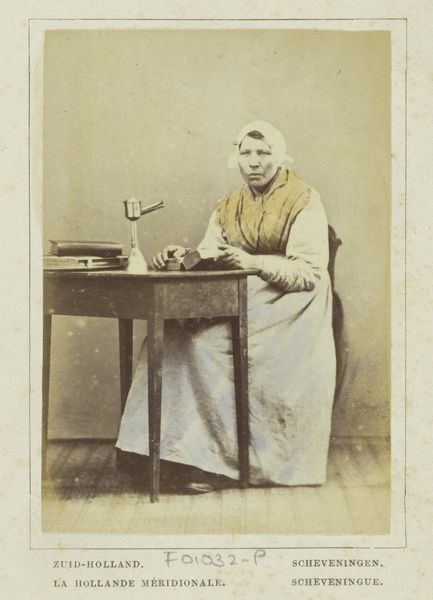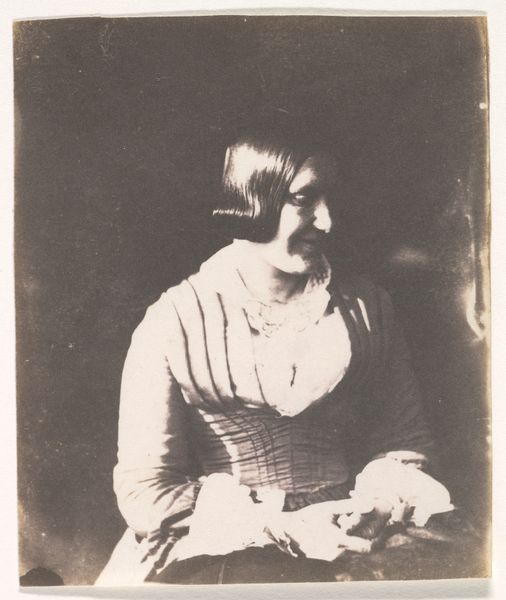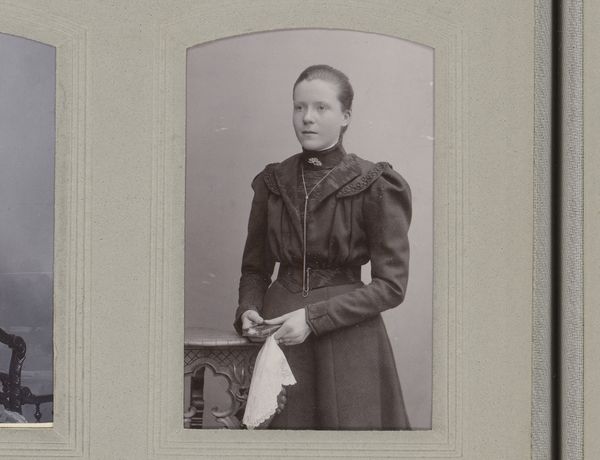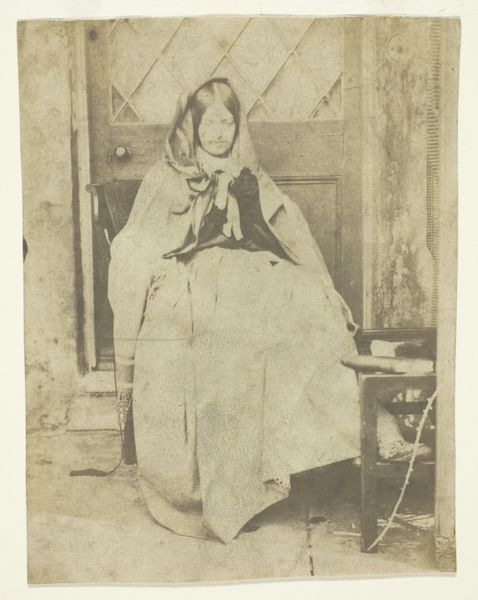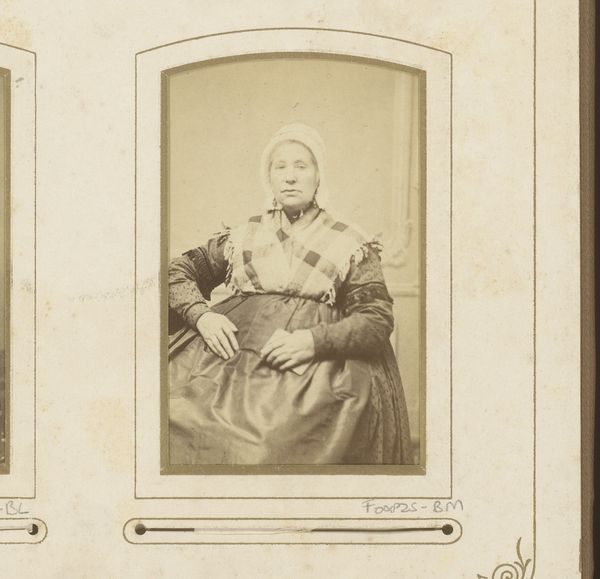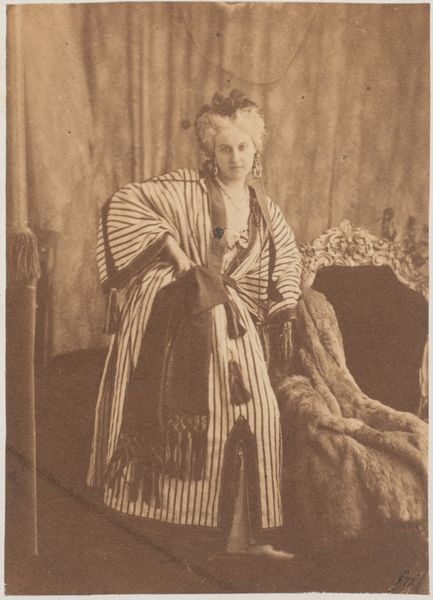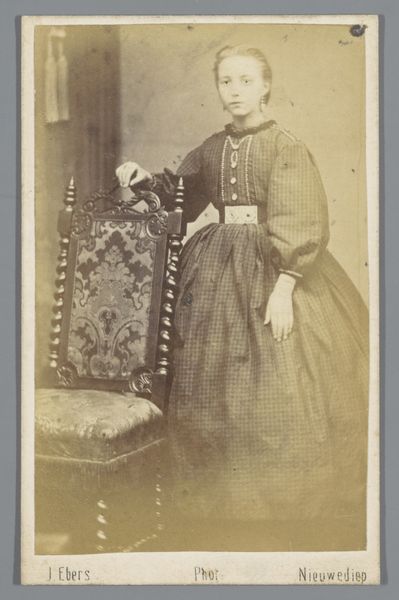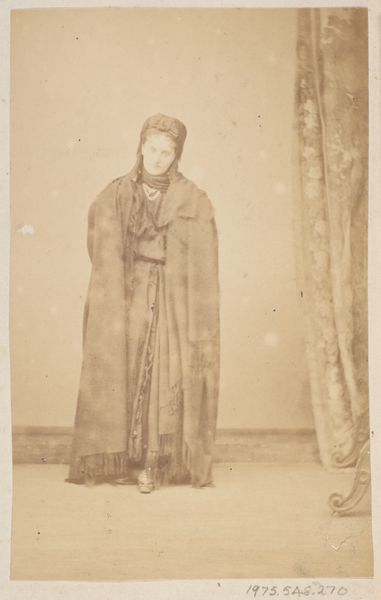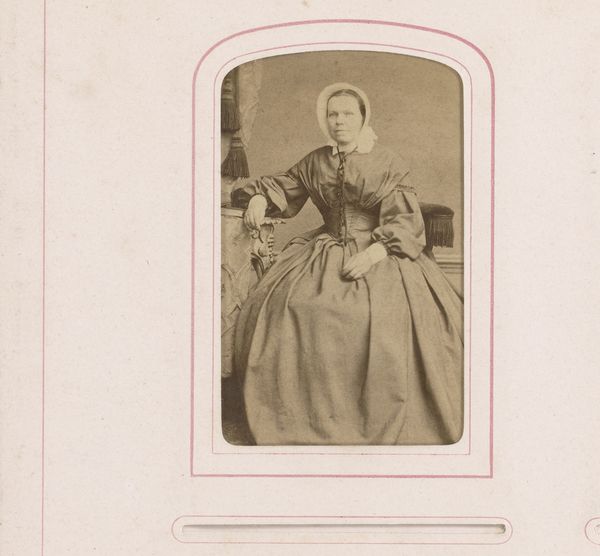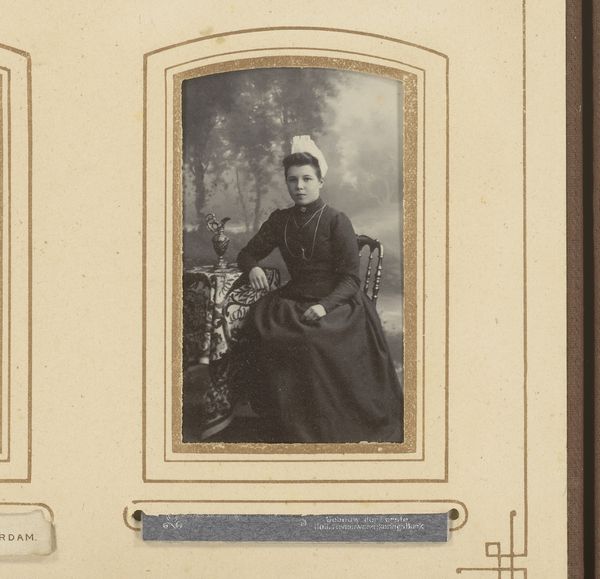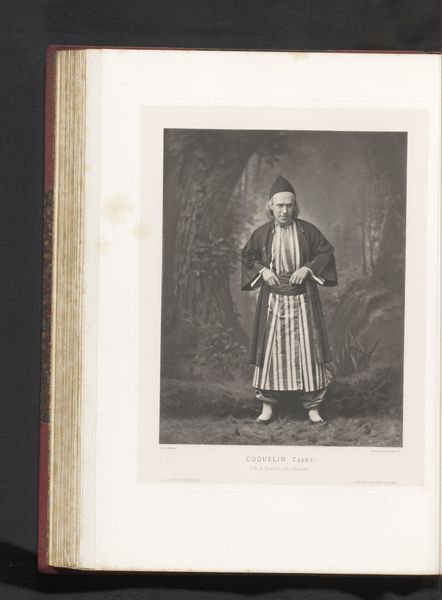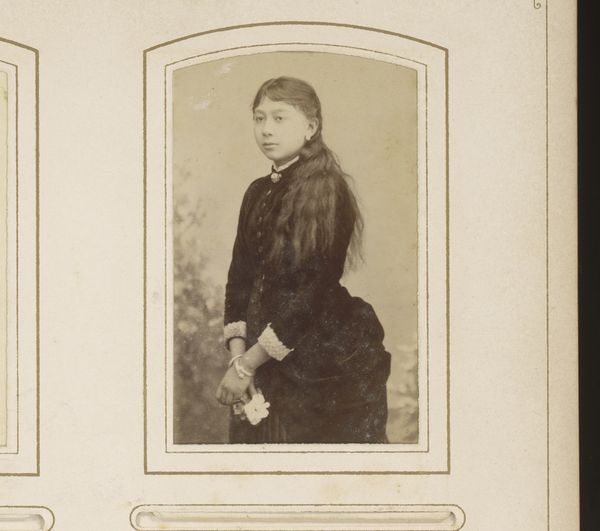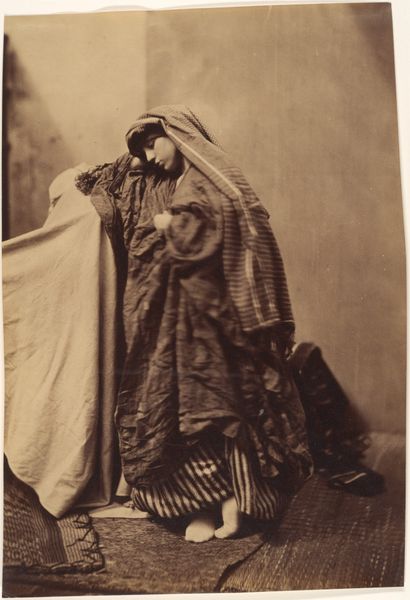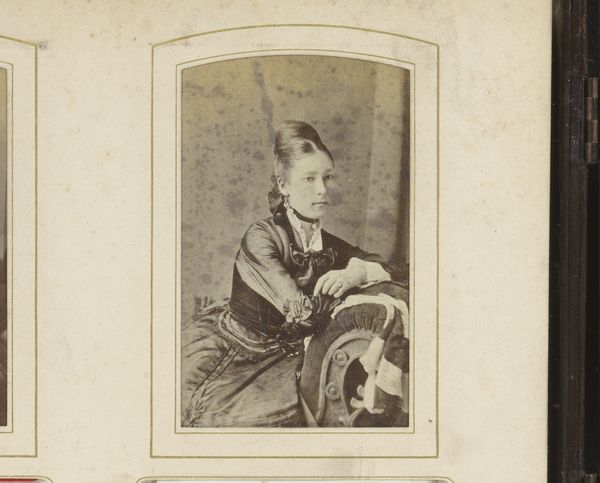
Dimensions: sheet (trimmed to image): 19.8 × 14.5 cm (7 13/16 × 5 11/16 in.) page size: 33.8 × 27 cm (13 5/16 × 10 5/8 in.)
Copyright: National Gallery of Art: CC0 1.0
Curator: This photograph is titled “Indoors, Katwyk” by Alfred Stieglitz. The black and white gelatin-silver print was likely created between 1894 and 1896. The composition focuses on a woman indoors seated, holding fabric. I’m immediately drawn to the subject's calm demeanor and the intimate stillness captured. Editor: The image possesses a stark realism, revealing not just the physical appearance of the woman but hinting at her daily life, perhaps even struggles within the domestic sphere of 19th-century Katwyk, a small fishing village in the Netherlands. It really humanizes the artist and his subject, wouldn’t you agree? Curator: Absolutely, and what is remarkable about the artistry here is the way Stieglitz has rendered light. He offers an intimacy that feels worlds apart from, say, his street photography of New York. There is also a formal arrangement of domestic space, but one feels less about posing and more about recording an experience with feeling. He's not glorifying poverty or diminishing anyone but inviting viewers in. Editor: And the stark simplicity contributes, too. The monochrome palette accentuates the textures—the coarse fabric of her dress, the smoothness of her head covering, and even her strong hands occupied with domestic needlework. One can only imagine how the economic system dictated the life choices for her and other women living within this confined area. What labor expectations were involved here? Curator: It’s difficult to separate it from a historical narrative. Though presented plainly, I would be lying if I told you there was an instant that my feelings about the image weren’t linked to broader concepts of domestic labor, expectations based on gender roles and societal class at the time… Editor: Well, these issues still reverberate today. "Indoors, Katwyk" urges viewers to reflect upon themes such as female representation, social disparity, and perhaps a touch of our own nostalgia and romanticism about an imaginary past. Curator: I leave it pondering not just how our narratives impact this image but how such scenes are still being lived out in so many places. Editor: Indeed. Stieglitz's photo captures a poignant intersection between one woman's private sphere and shared realities that continue into the present.
Comments
No comments
Be the first to comment and join the conversation on the ultimate creative platform.
